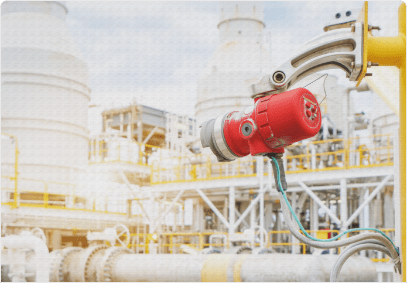The smart Trick of Roar Solutions That Nobody is Discussing
The smart Trick of Roar Solutions That Nobody is Discussing
Blog Article
Roar Solutions for Dummies
Table of ContentsSome Known Incorrect Statements About Roar Solutions Top Guidelines Of Roar SolutionsSome Known Details About Roar Solutions
In order to safeguard installations from a prospective explosion an approach of analysing and classifying a possibly harmful location is required. The objective of this is to make certain the correct selection and installment of equipment to ultimately prevent a surge and to make sure safety and security of life.
(https://www.pearltrees.com/roarsolutions#item694973743)
No devices needs to be set up where the surface area temperature level of the devices is higher than the ignition temperature level of the offered hazard. Below are some typical dust unsafe and their minimum ignition temperature level. Coal Dust 380C 225C Polythene 420C (thaws) Methyl Cellulose 420C 320C Starch 460C 435C Flour 490C 340C Sugar 490C 460C Grain Dirt 510C 300C Phenolic Resin 530C > 450C Aluminium 590C > 450C PVC 700C > 450C Residue 810C 570C The possibility of the threat existing in a focus high adequate to create an ignition will certainly differ from area to area.
In order to categorize this danger an installation is split into areas of danger relying on the quantity of time the harmful exists. These locations are described as Zones. For gases and vapours and dirts and fibres there are three areas. Area 0 Zone 20 A hazardous environment is extremely likely to be existing and may be present for long periods of time (> 1000 hours per year) or perhaps continually Area 1 Zone 21 A harmful ambience is possible but unlikely to be present for lengthy durations of time (> 10 450 C [842 F] A category of T6 implies the minimum ignition temperature level is > 85 C [185 F] Harmful location electric tools possibly created for usage in higher ambient temperature levels. This would suggested on the rating plate e.g. EExe II C T3 Ta + 60C( This suggests at 60C ambient T3 will certainly not be surpassed) T1 T1, T2, T3, T4, T5, T6 T2 T2, T3, T4, T5, T6 T3 T3, T4, T5, T6 T4 T4, T5, T6 T5 T5, T6 T6 T6 A T Class ranking of T1 indicates the optimum surface area temperature level generated by the tool at 40 C is 450 C. Thinking the associated T Class and Temperature level rating for the devices are appropriate for the area, you can always use an instrument with an extra rigorous Department rating than needed for the area. There isn't a clear answer to this inquiry. It truly does depend upon the type of devices and what fixings need to be accomplished. Devices with specific test treatments that can not be done in the area in order to achieve/maintain 3rd event rating. Have to return to the factory if it is before the equipment's service. Area Repair Work By Authorised Worker: Complex testing might not be needed nevertheless certain treatments might require to be adhered to in order for the devices to maintain its 3rd party rating. Authorised workers need to be employed to perform the job properly Repair service must be a like for like replacement. New component must be thought about as a direct replacement requiring no special testing of the equipment after the repair is complete. Each item of equipment with a hazardous score must be assessed independently. These are described at a high degree listed below, yet for more thorough details, please refer directly to the guidelines.
9 Easy Facts About Roar Solutions Shown
The tools register is an extensive data source of tools records that includes a minimum collection of areas to determine each item's location, technical parameters, Ex-spouse category, age, and ecological information. The ratio of Detailed to Shut inspections will be established by the Devices Risk, which is assessed based on ignition threat (the likelihood of a source of ignition versus the chance of a combustible atmosphere )and the unsafe location classification
( Zone 0Area 1, or 2). Carrying out a robust Risk-Based Inspection( RBI )approach is essential for guaranteeing compliance and safety in managing Electrical Equipment in Hazardous Locations( EEHA).
Roar Solutions Can Be Fun For Anyone

In regards to explosive risk, a harmful area is an environment in which an explosive environment exists (or might be expected to be existing) in quantities that require unique safety measures for the building, installation and use of devices. electrical refresher course. In this short article we discover the obstacles dealt with in the workplace, the threat control procedures, and the called for proficiencies to function safely
It issues of contemporary life that we manufacture, save or deal with a range of gases or fluids that are deemed combustible, and a series of dirts that are considered combustible. These compounds can, in certain problems, form eruptive atmospheres and these can have major and terrible effects. The majority of us know with the fire triangular remove any type of one of the three components and the fire can not occur, however what does this mean in the context of dangerous locations? When damaging this down into its easiest terms it is basically: a mix of a certain amount of launch or leakage of a particular compound or product, combining with ambient oxygen, and the existence of a resource of ignition.
In the majority of circumstances, we can do little concerning the degrees of pop over here oxygen airborne, however we can have substantial impact on resources of ignition, as an example electrical equipment. Harmful areas are recorded on the unsafe location category illustration and are determined on-site by the triangular "EX-SPOUSE" sign. Here, among various other vital details, areas are divided into three types depending upon the danger, the likelihood and period that an eruptive ambience will certainly exist; Zone 0 or 20 is deemed one of the most hazardous and Area 2 or 22 is considered the least.
Report this page